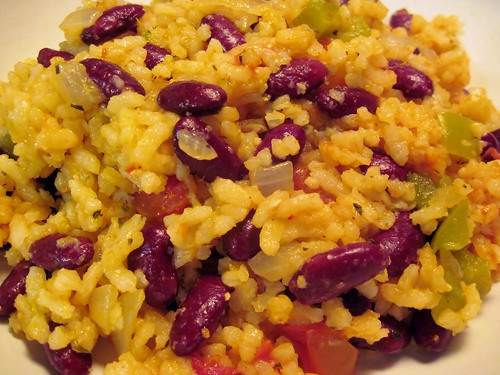Someone asked me recently for some recipes that help to stretch the food dollars. And I've been thinking, too about how there are those who say that eating differently than the Standard American Diet is expensive and that they cannot afford it.
I thought I would share some ideas that speak into both of these...things that have worked well for me and my family for the past 6 years.
don't plan your meal around meat. Besides being expensive, meat eaten excessively leads to disease and also supports environmentally harmful farming practices. Plan your menu around the WHOLE FOOD starch and vegetables instead, using meat (if you are using it) as a condiment or flavoring for the dish.
try to have raw veggies at every meal as much as you can
grow your own food, if you can; in the summer I put up green beans, tomoto products, and
corn for the winter's use. We grow peppers and can sweet pepper strips as well. We grow our own onions and peppers for summer and autumn use, too.
Here is how this idea is applied in my household:
*stir fried veggies with an MSG free Asian sauce, soy sauce and whole grain or whole grain pasta tossed in at the end of the saute period. If dessert is needed, try a piece of fruit per person or an apple with peanut butter.
*green smoothies for the salad, then lentil joes (your favorite sloppy joe sauce mixed into a 1:1 lentil/ground beef blend. I use 1 pt cooked, green lentils for each lb ground beef I use.) You can either make sloppy joe sandwiches with this or serve mashed potatoes with it. If a smoothie is not wanted, how about a cole slaw?
*homemade baked french fries, black bean burgers, and a veggie/hummus plate
*rice and beans, served with fresh pico de gallo and lettuce.
*a nacho bar, complete with home made refried beans, lettuce, tomatoes or pico de gallo, cheddar cheese or cashew cheez sauce, and taco salad dressing
*green beans, sweet potatoes grated with a large hole grater and 'fried' in a little butter with a little salt, and a garden salad. A few white beans or nuts can be tossed over the salad.
*hash browns sauteed with onions, peppers, mushrooms and garlic and a few pieces of sausage cut lengthwise and then in small pieces to ensure more bites with that sausage flavor them. Green smoothies or salad go well with this meal at my house.
*taco soup with 1 quart of beans per lb of ground beef or stew meat; veggies and hummus
*chicken noodle soup with whole grain or chick pea flour noodles (yes, these are easy to make and are a great way to hide those beans for finicky eaters) and a little chicken to flavor the dish. Use lots of carrots, onions, celery and garlic! A salad on the side is great with a bowl of this soup.
*veggie subs: whole grain sub buns with hummus or mayo, lettuce, tomatoes, carrots, peppers, onions, shredded zucchini, spinach, sweet pepper strips, black olives. Shake salt, pepper and oregano over them, just like Subway does.
*buffalo chicken ranch burritoes; whole grain wraps, chopped chicken, pickle relish, ranch (I use either home made or Marie's brand), a little cheddar for flavor and buffalo bbq sauce. Roll all into a wrap and bake at 350 uncovered for 15 to 20 min. Serve salsa on the side, or put salsa inside or both! Add a salad and you have a meal.
*bean soup with a few pieces of sausage added; serve a veggie/hummus tray besides.
*A salad bar; apple crisp for dessert
These kinds of meals have both stretched our food budget and helped us to feed the cells in our bodies with good nutrition. We have enjoyed full stomachs and good health the past 6 years. I tend not to cook with much sugar or flour, meat or dairy. Those are all luxury/specialty items in our household. That both saves $'s and helps to keep disease from finding room to grow.

Starches in our meals consistently follow whole grains, potatoes, and other root vegetables. We make good use of sweet potatoes in the winter as well as red potatoes, and russets. We eat whole grain rice or quinoa frequently. These are good energy foods, especially for growing children and active husband. I try to always serve cooked vegetables and always have something raw at every meal as much as is possible.
This way of eating is not expensive if you learn how to cook whole foods. Whole foods fill bellies much, much faster than processed foods do, thus also saving you money. Consistently eating mostly whole plant foods also saves doctor bill $'s (this is not just my testimony, it is the story of many others as well).
Blessings to all,
Marcia
PS
Anyone with great budget-friendly whole plant strong recipes, feel free to send them to me. I might just go ahead and share them here!
We as a family also take Juice Plus daily for consistent fruit and vegetable nutrition, just because not all our food is balanced as much as we like, nor is food these days raised with as high nutrition as it could be or should be. If you are interested in learning more, please contact me. I would love to help you give it a try.

No comments:
Post a Comment
Feel free to leave me a comment or a question. I enjoy interacting with my readers.